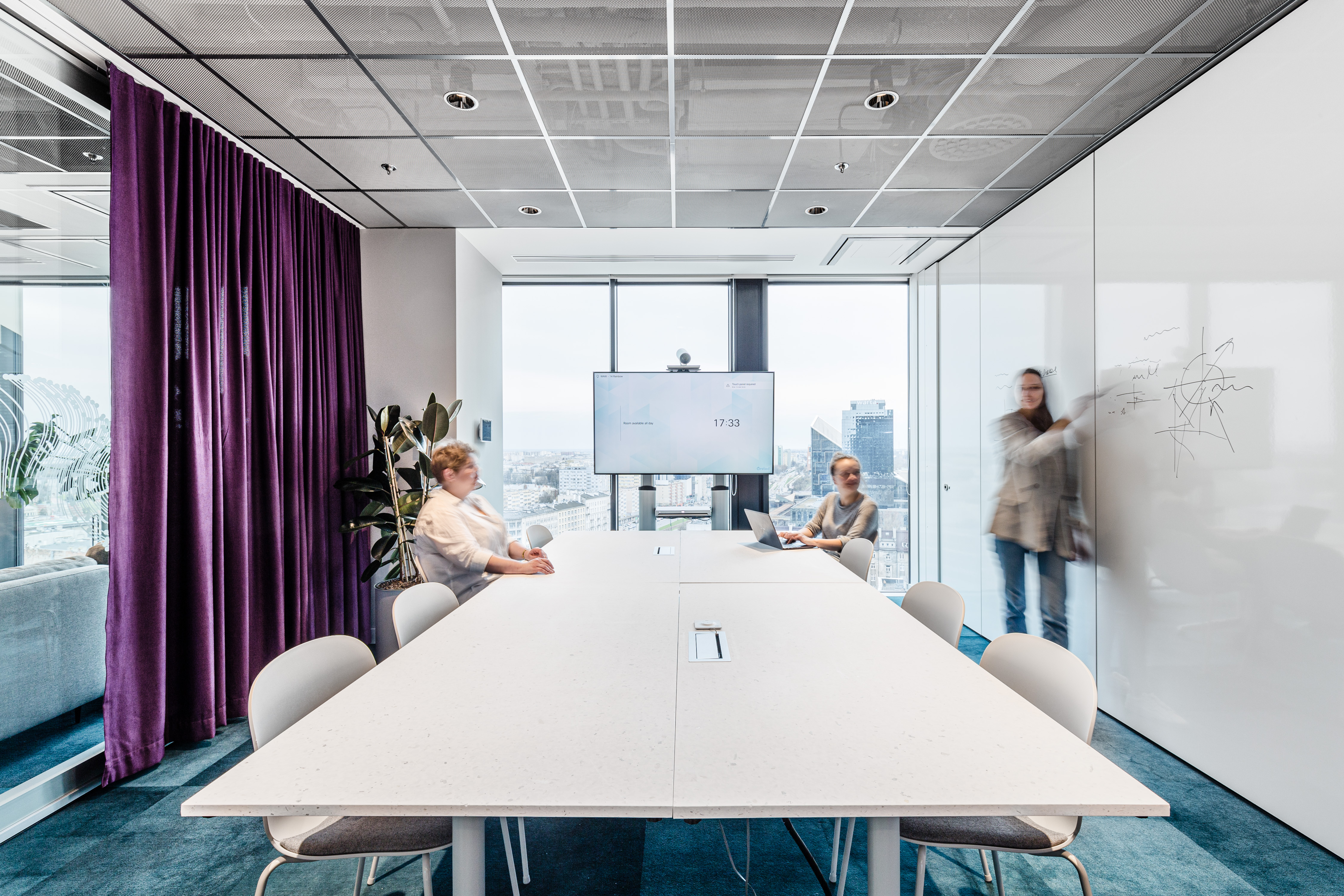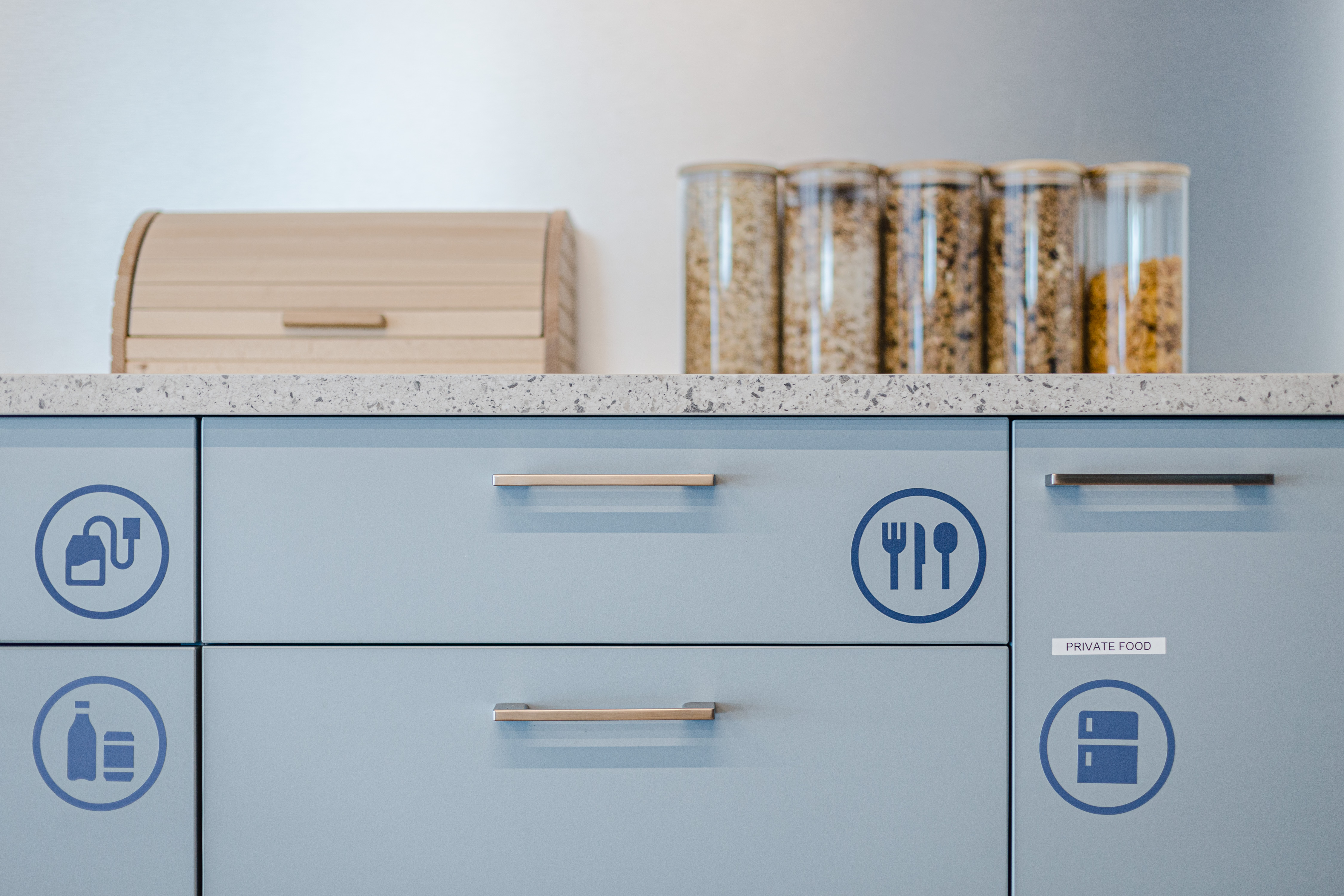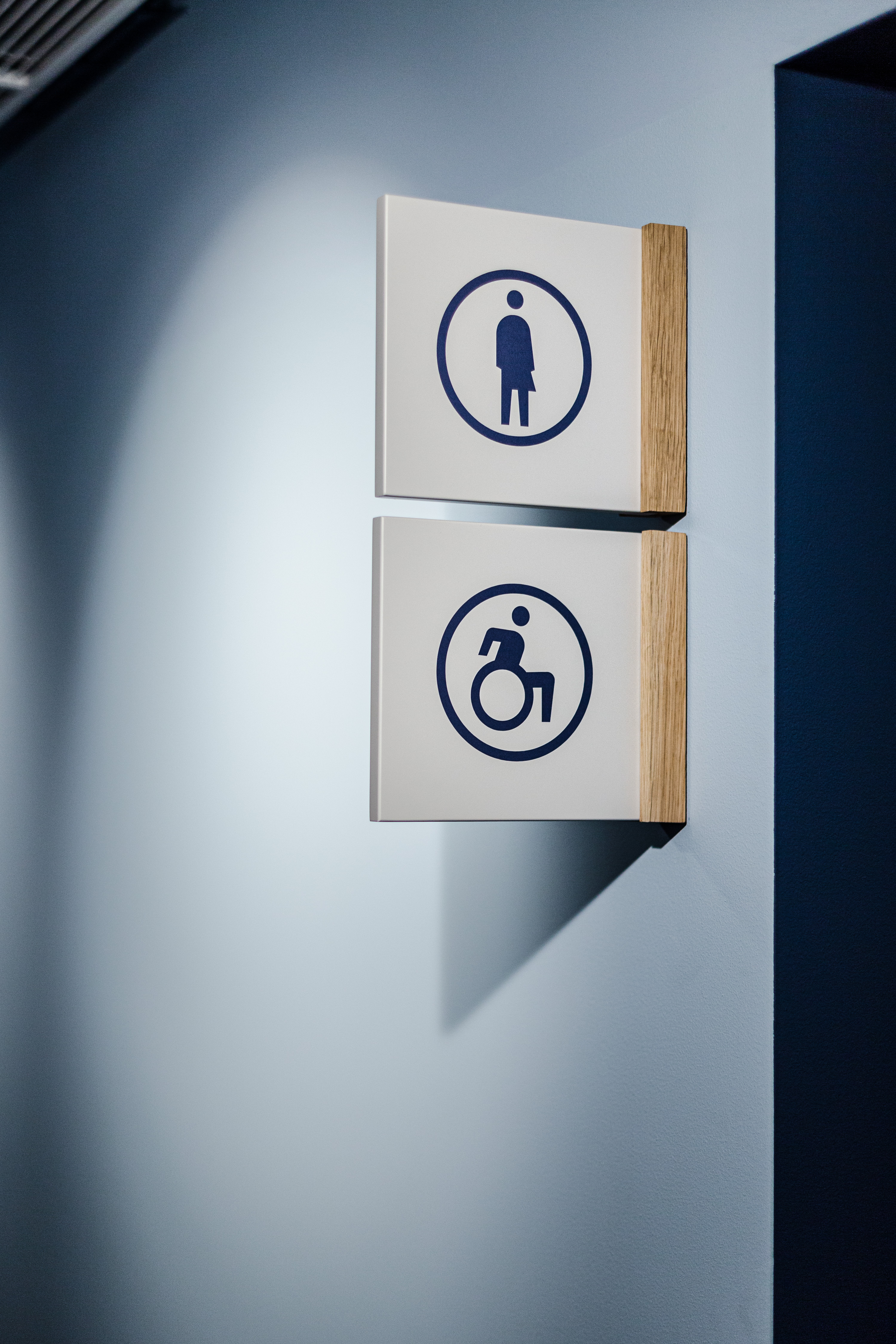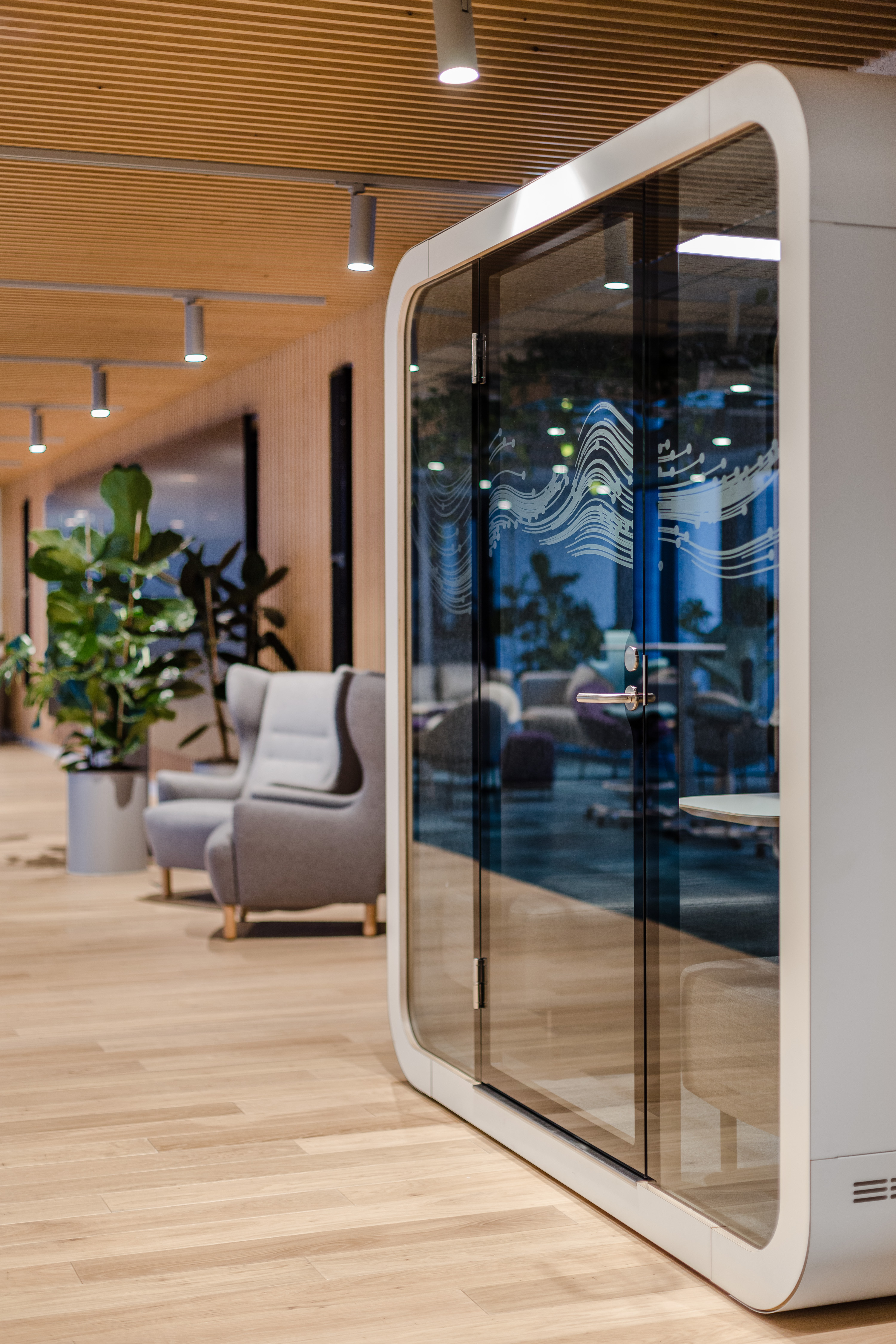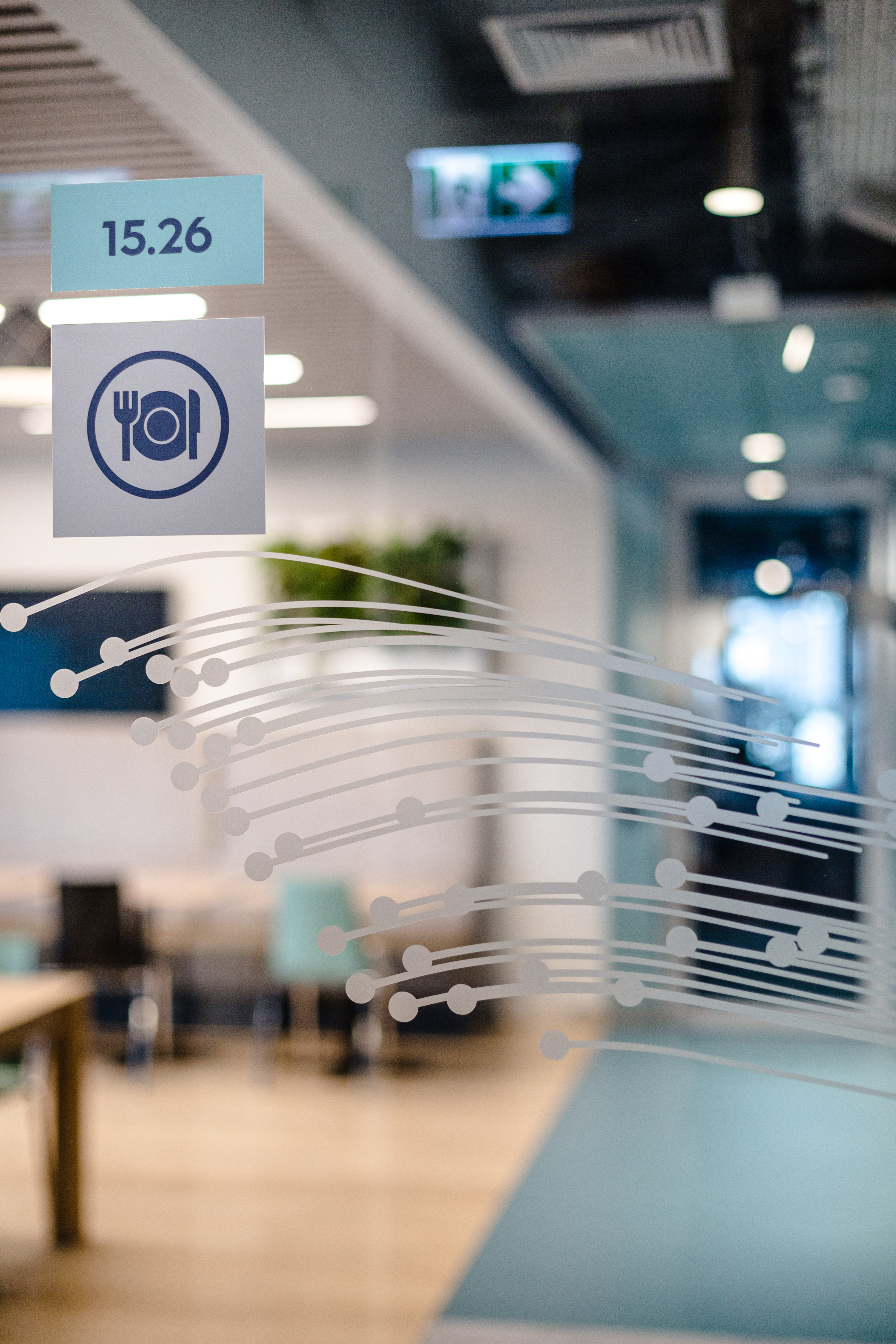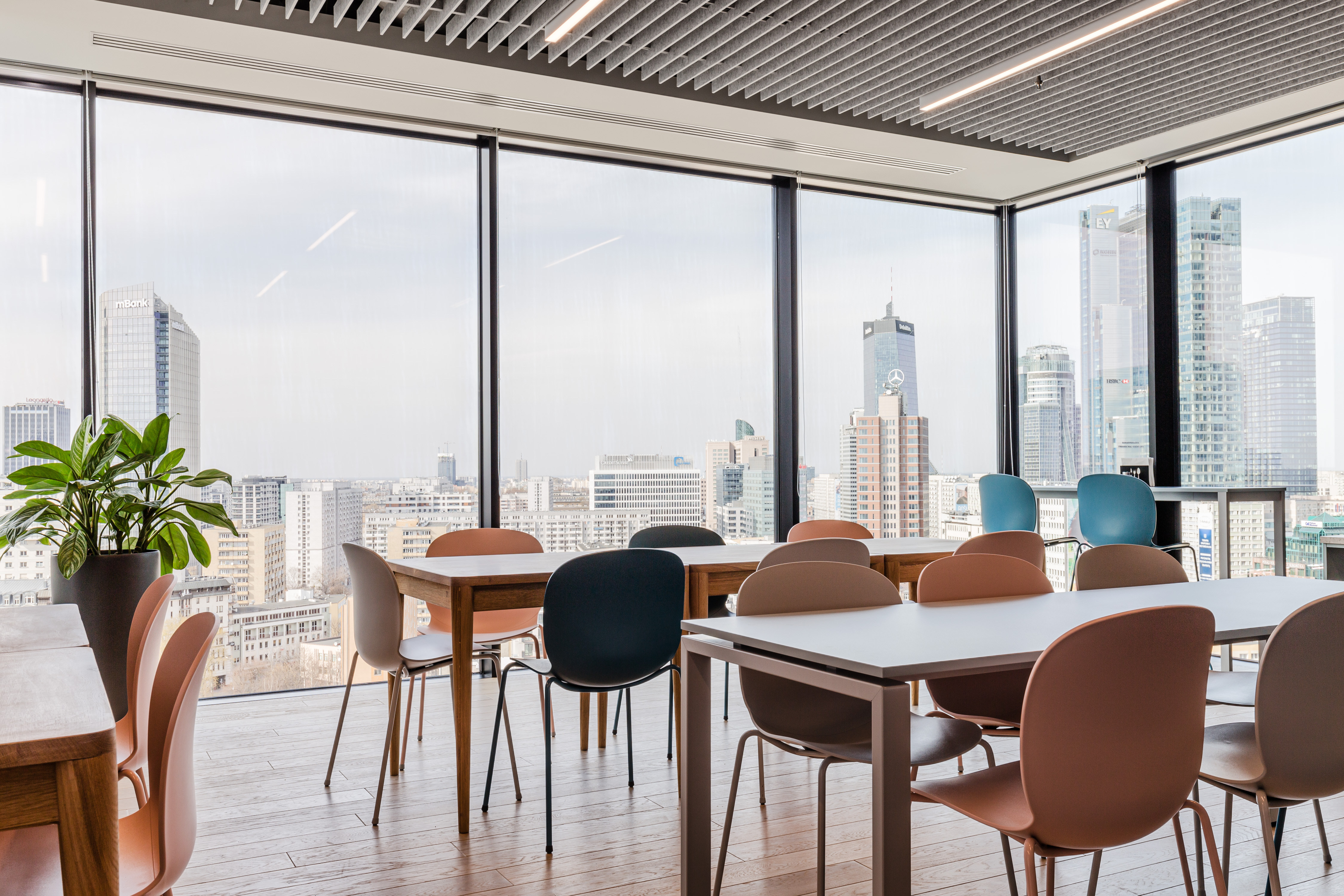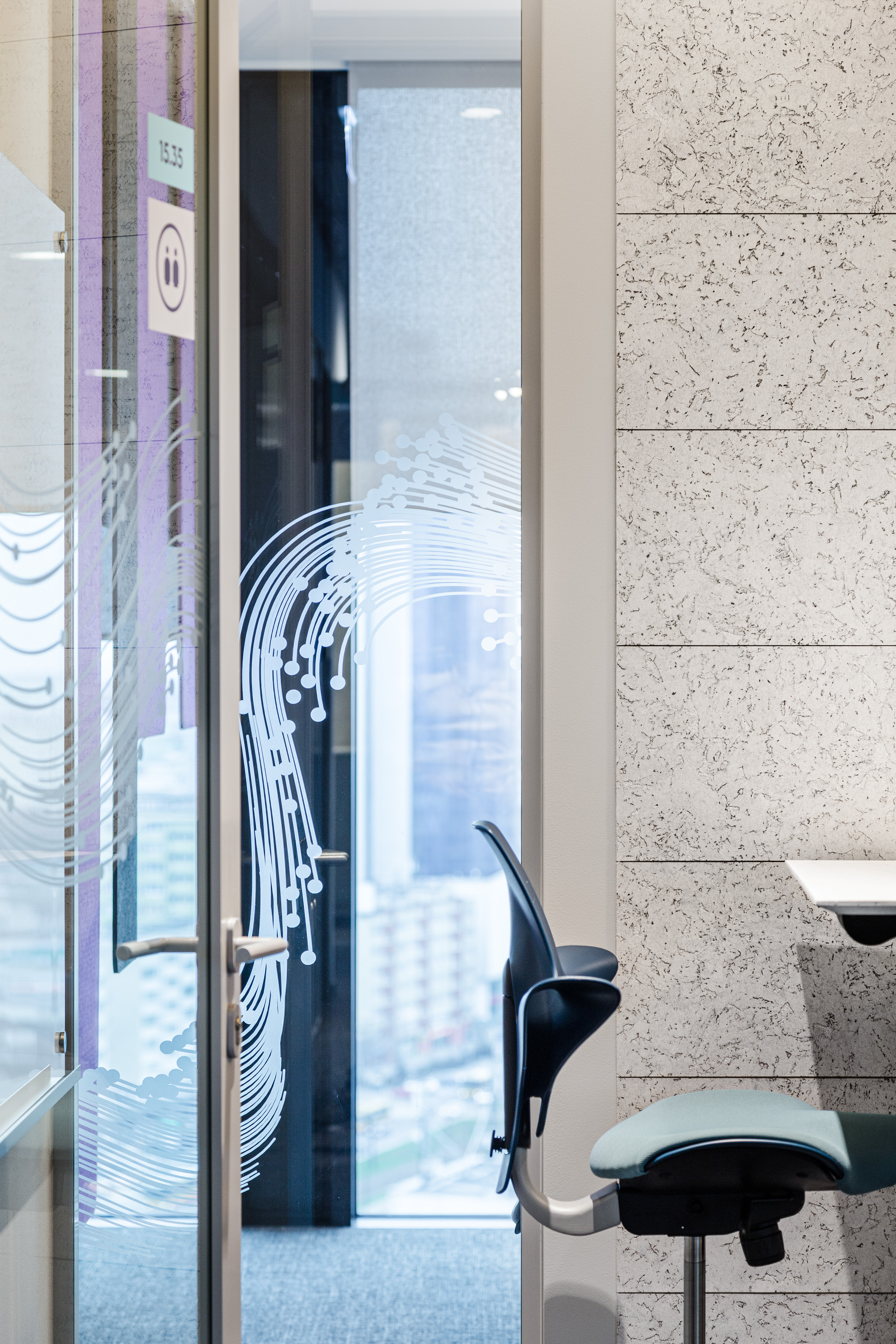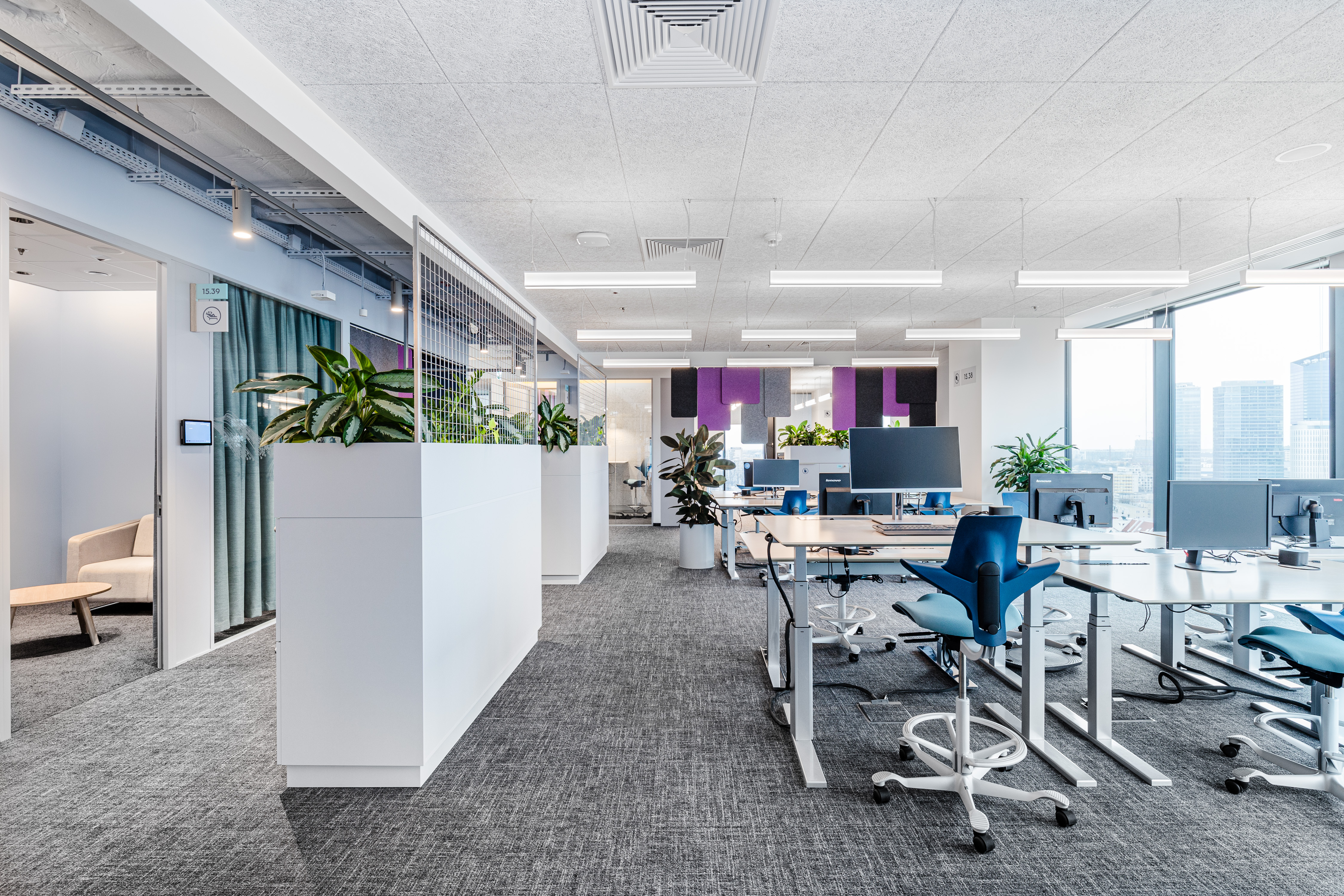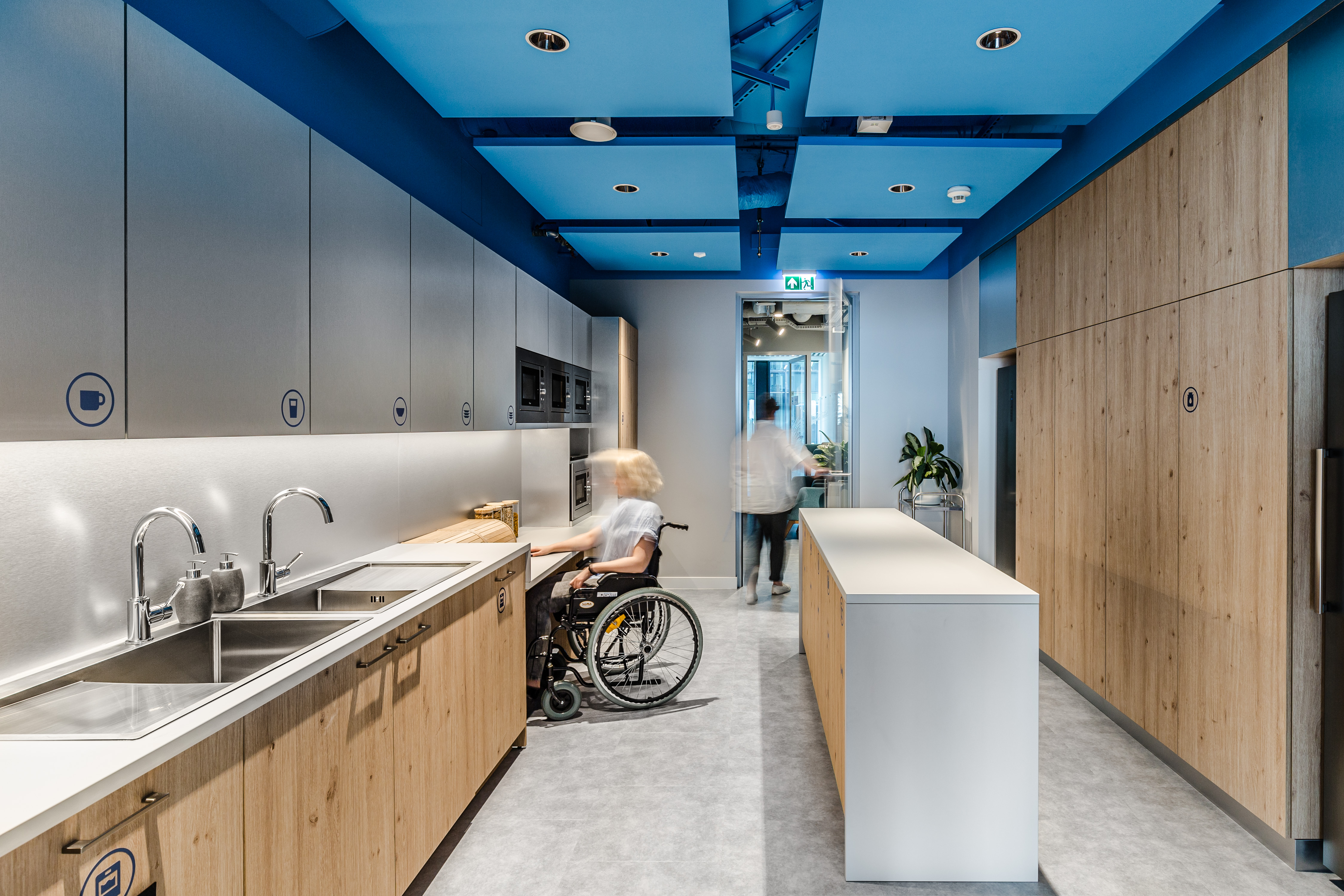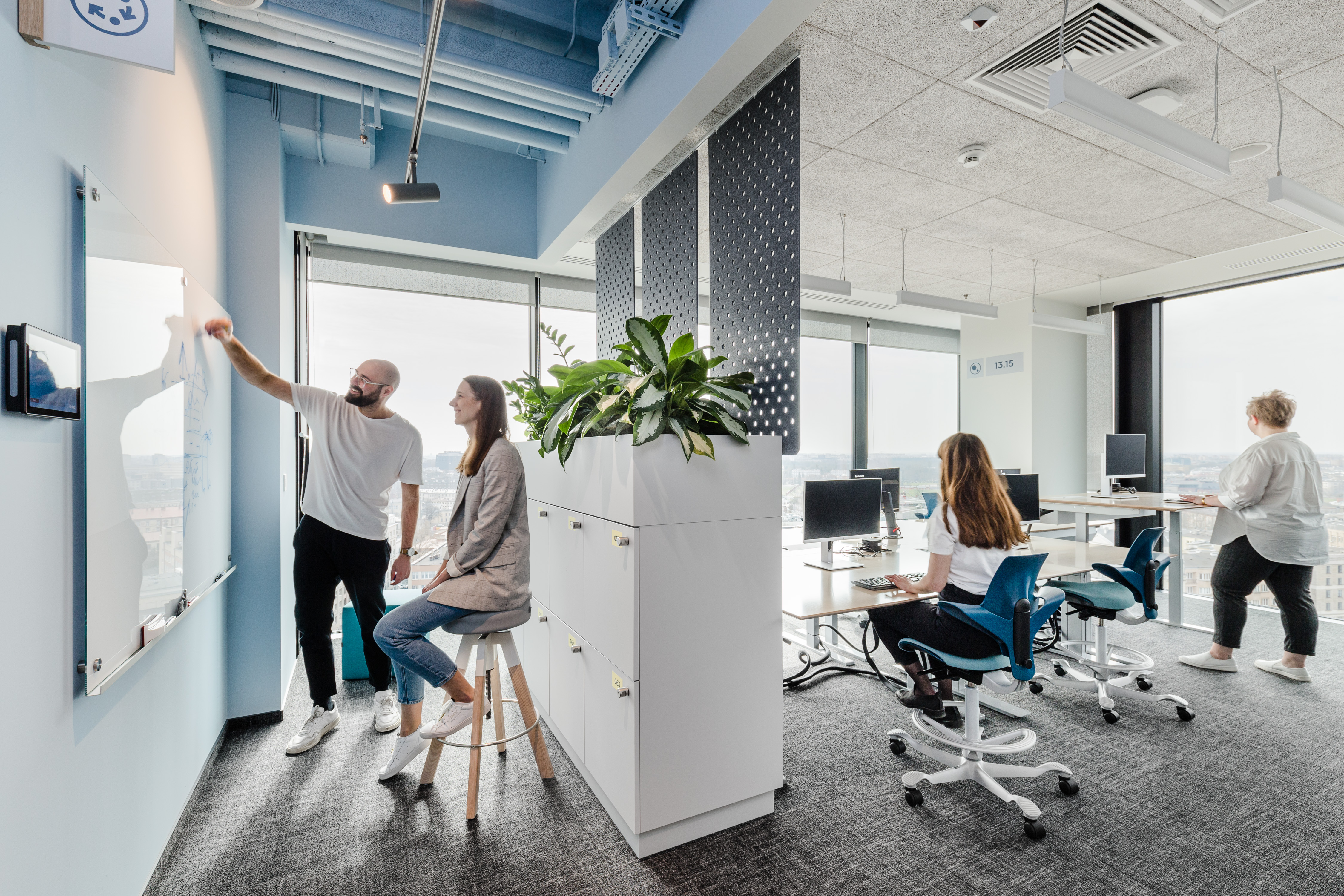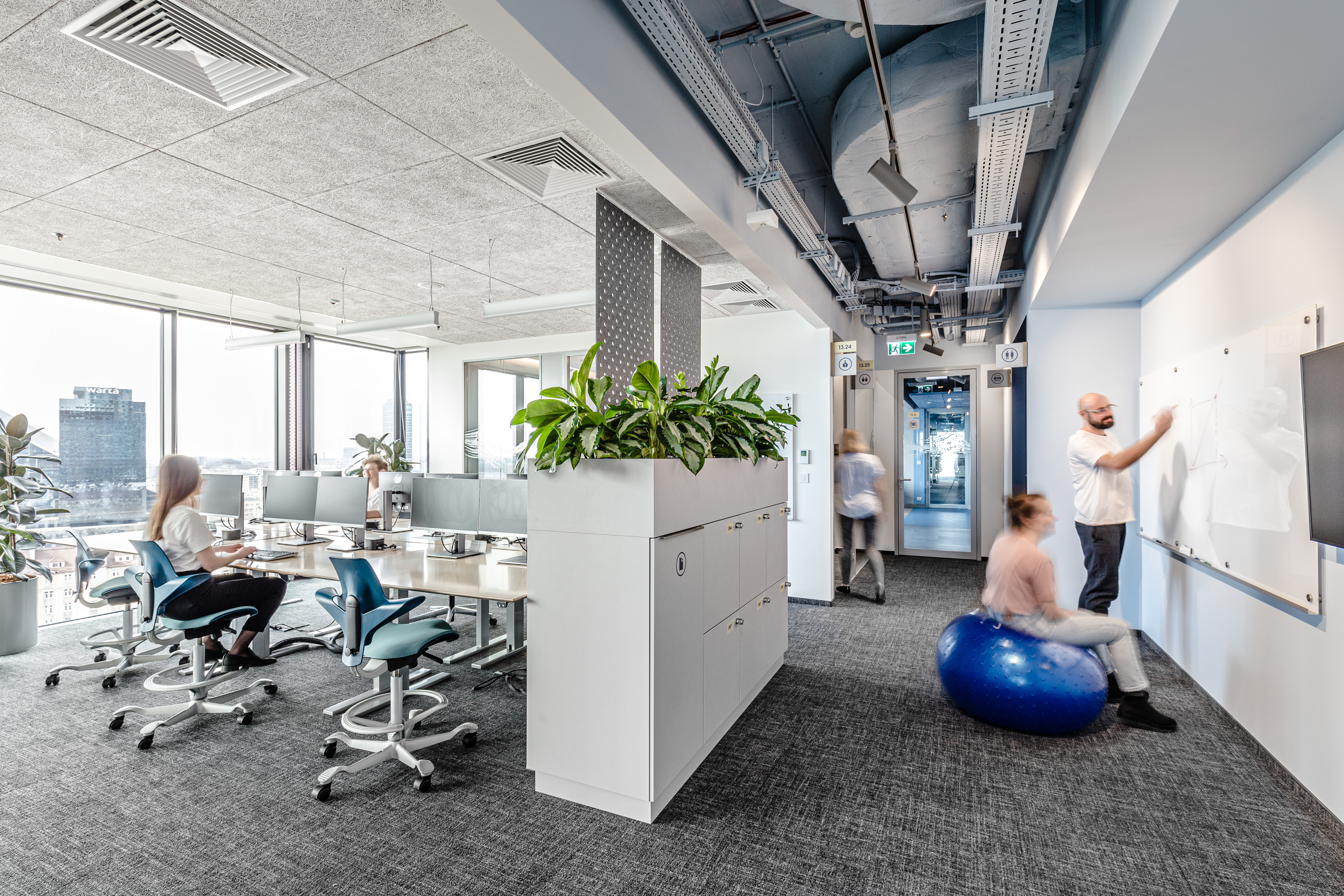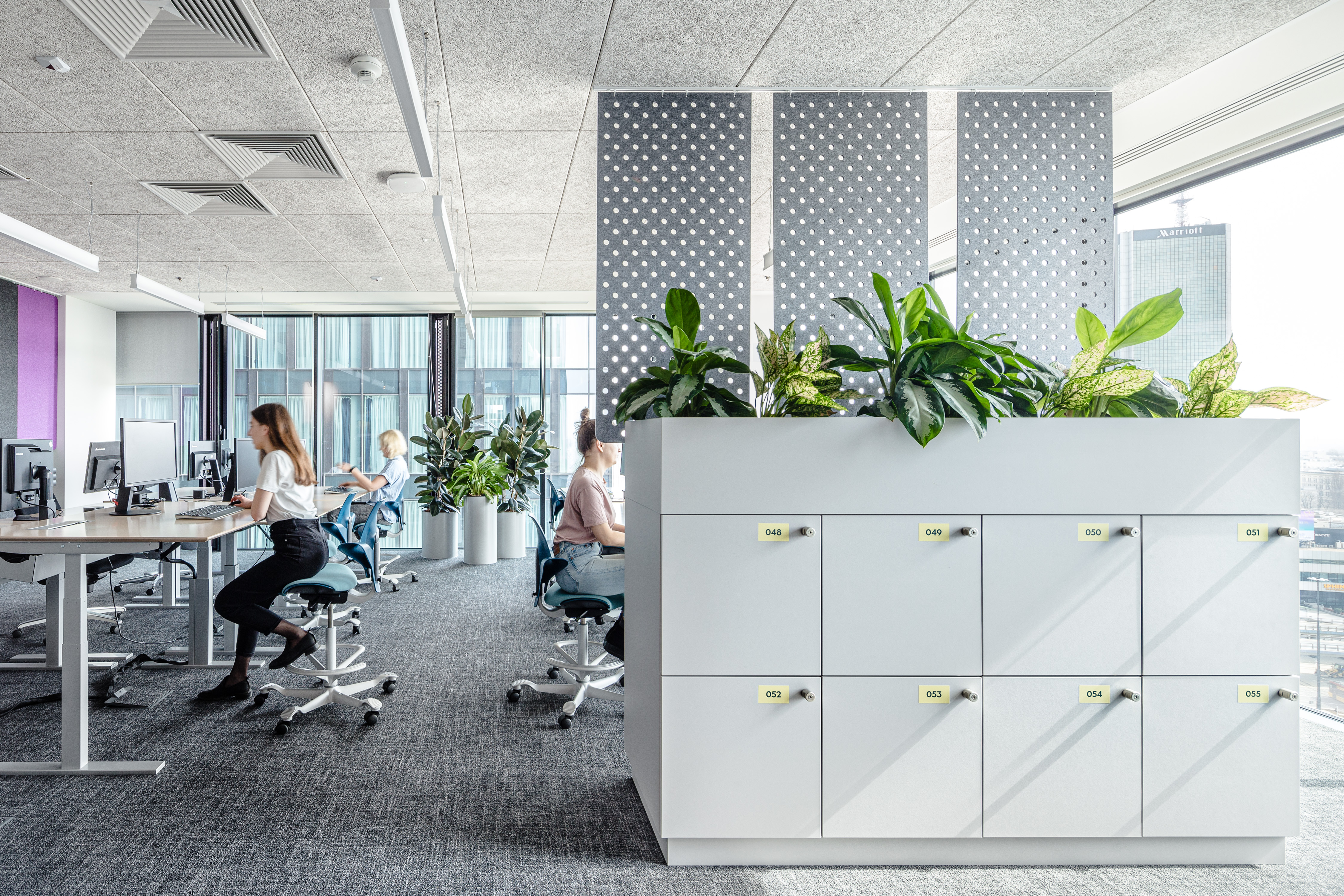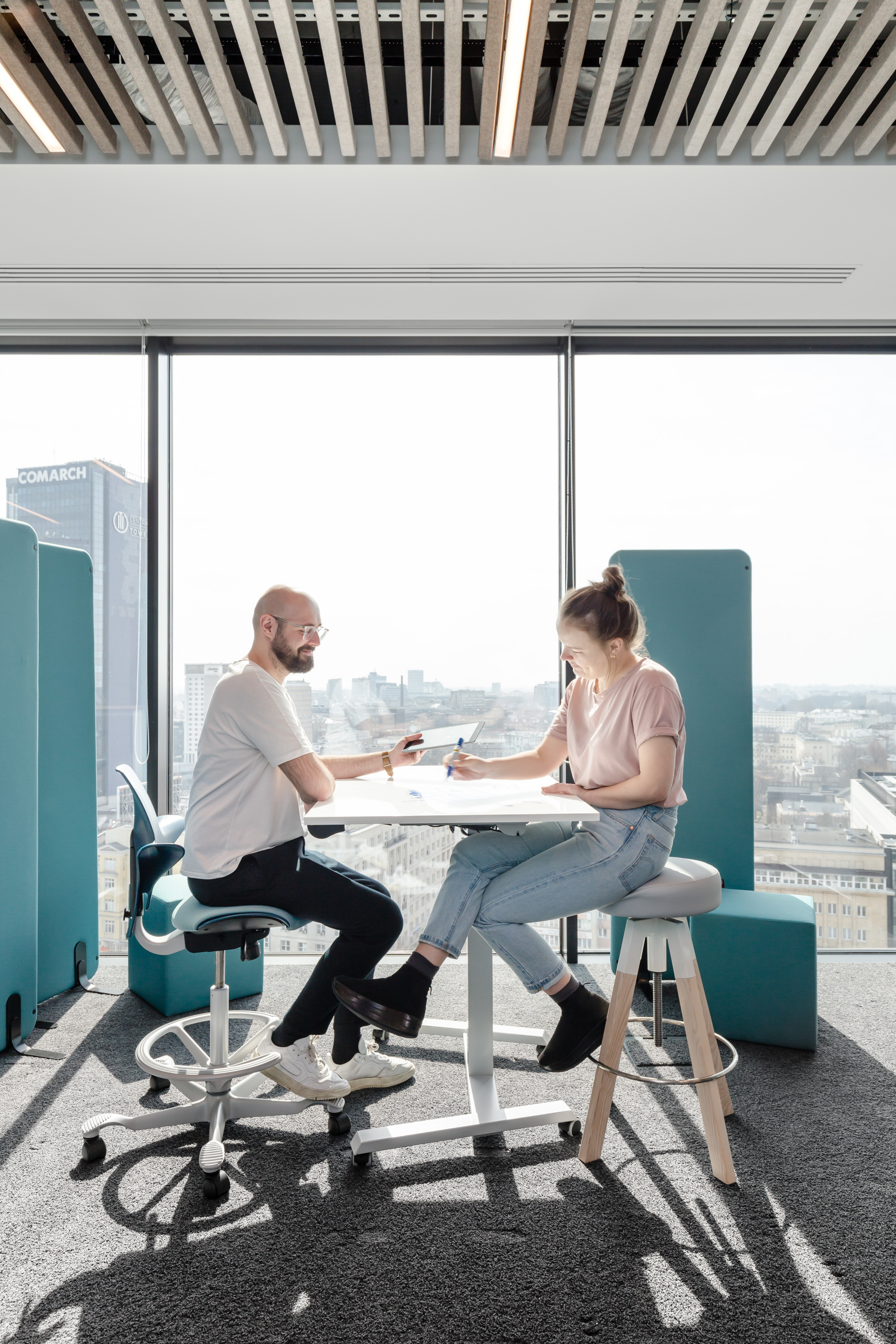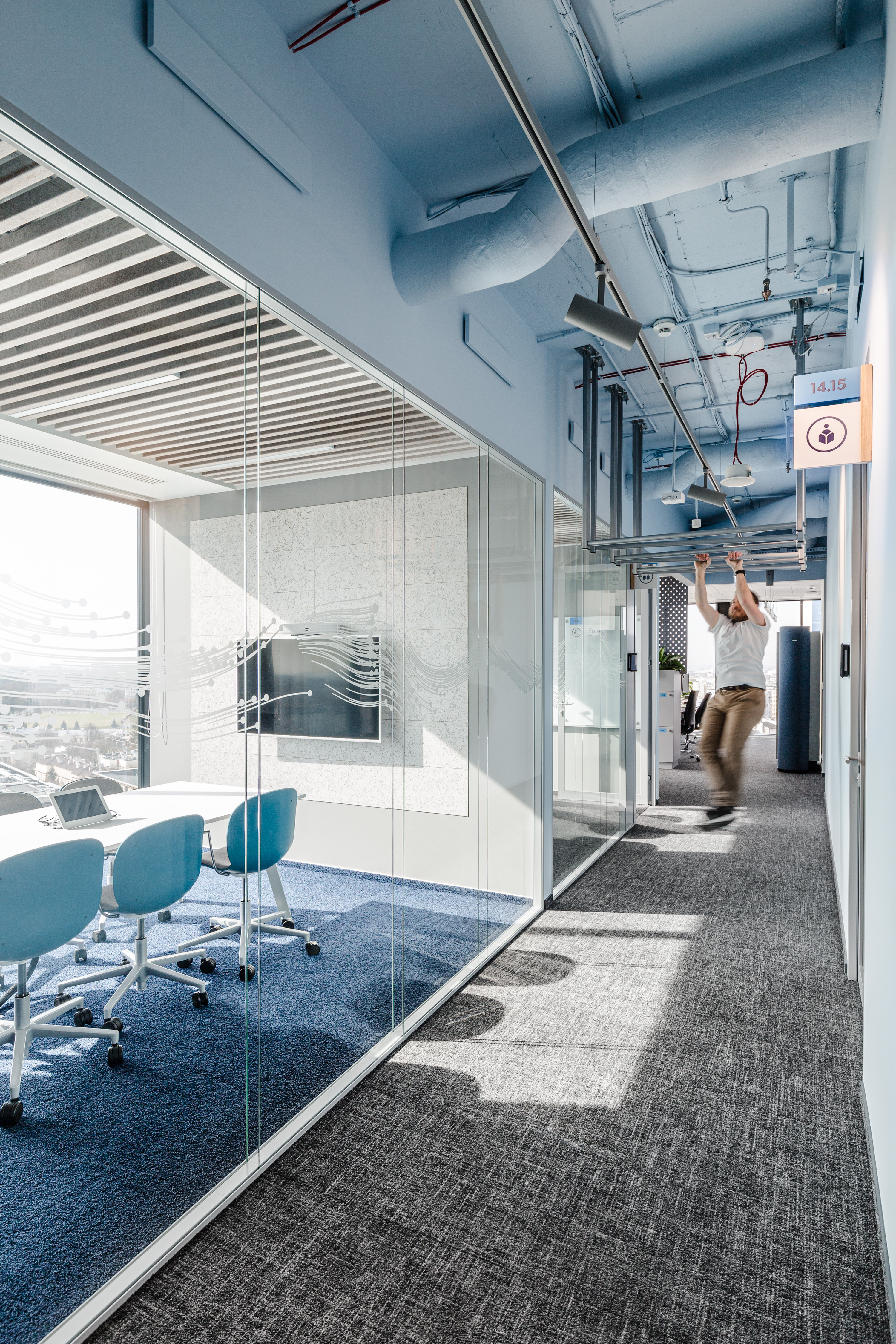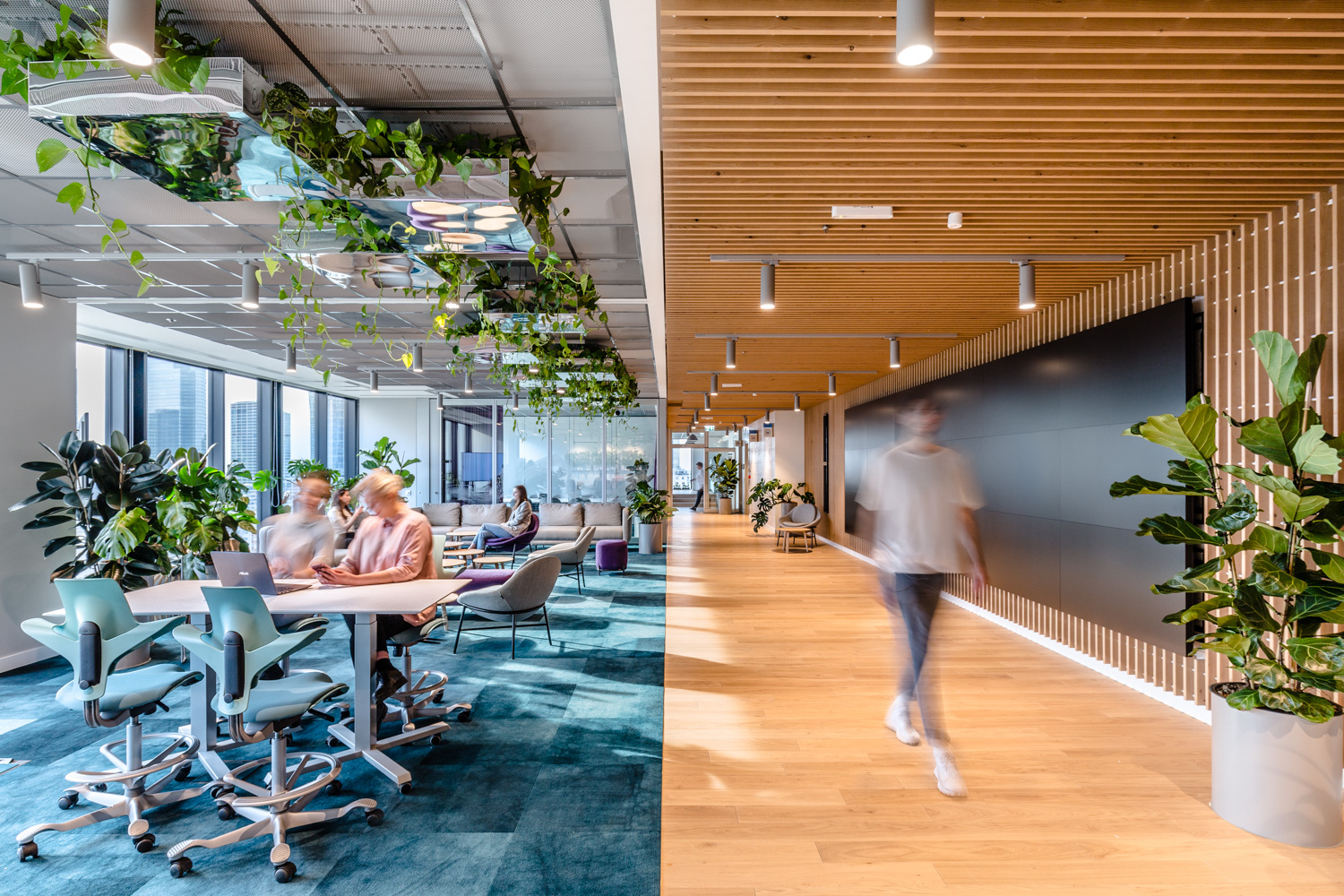
Ørsted Sustainable Office I Warsaw
Ørsted’s new Warsaw office provides 3,600 sqm. of workspace, reflecting the values of one of the world’s largest renewable energy companies. This is already the second office project in Poland based on the idea of less waste. The circular design process here was the first step in translating Ørsted’s sustainable vision into their new work environment. Combined with biophilic design and brand aesthetics, Ørsted Warsaw Office emphasises the spirit of innovation, optimism and a love for nature.
BACKGROUND
Ørsted believes that our planet needs love, but love means nothing without action. Therefore, the company transformed from one of the most fossil fuel intensive energy companies in Europe to the most sustainable company in the world, claimed this title for the 3rd year in the row. Today, Ørsted is the global market leader in offshore wind energy. The new Polish office underlines the vision of the organisation recognised as a global leader in climate protection – creating a world that runs entirely on green energy.
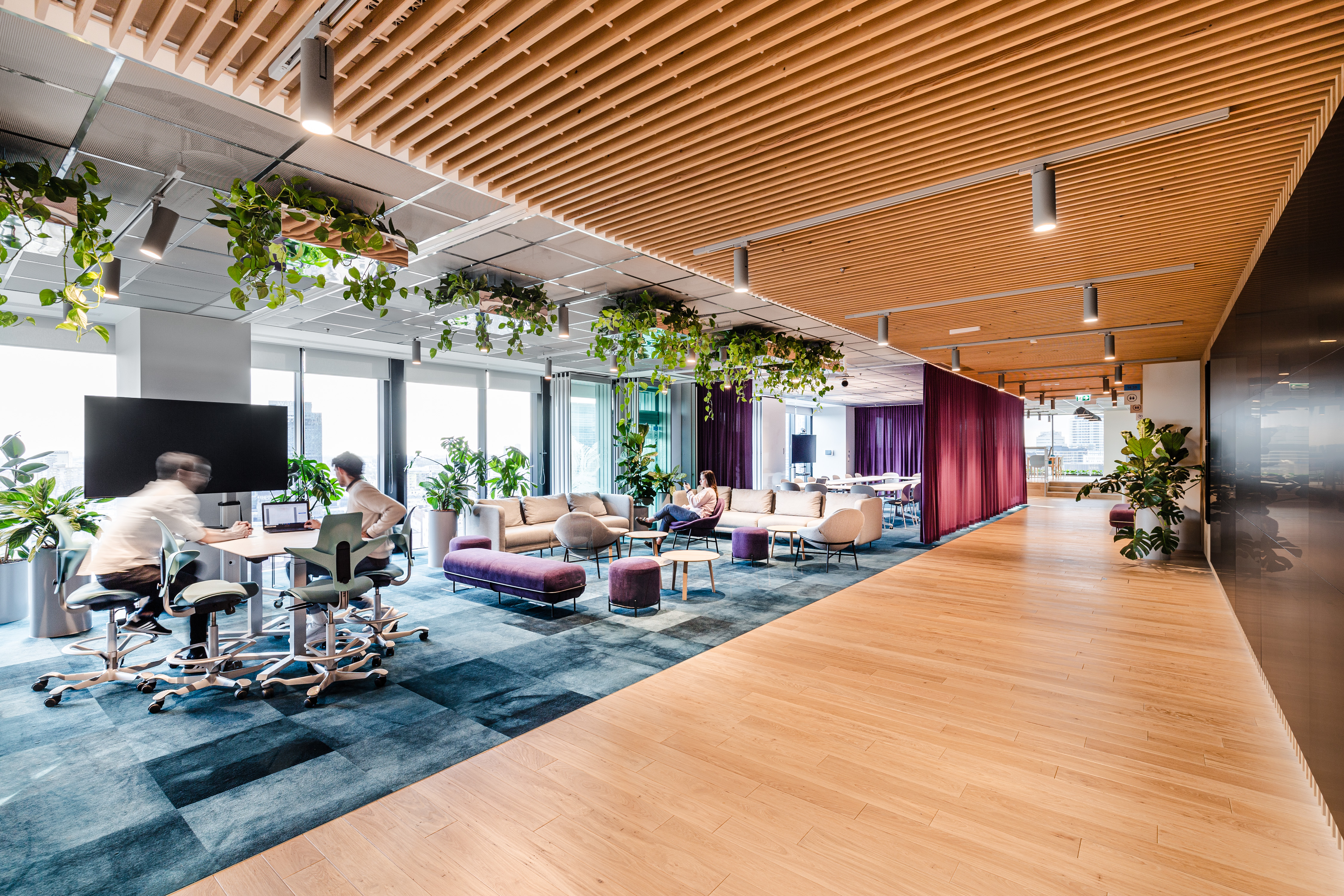
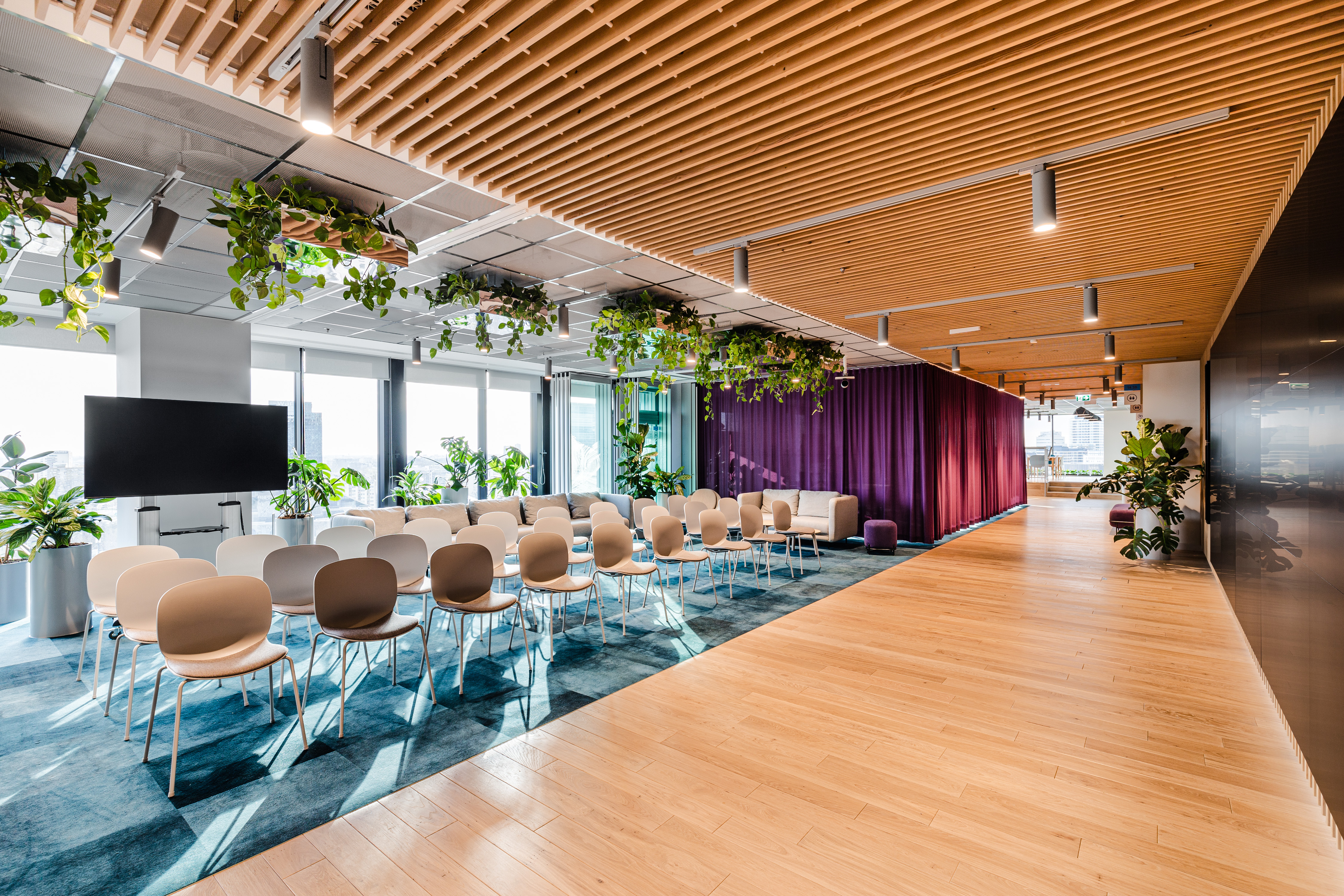
PROJECT OBJECTIVES
The project pursued four strategic objectives:
1. Environmental friendliness – reducing negative environmental impact not only through the use of eco-friendly materials but also through the design process.
2. Functionality – providing the highest quality ergonomic workstations, acoustic comfort and multiple spaces for different activities, including an open meeting area for the whole company.
3. Well-being – supporting the good physical health and emotional balance of employees.
4. Agility – the ability to reconfigure the space to easily change the nature of work from individual to collaborative.
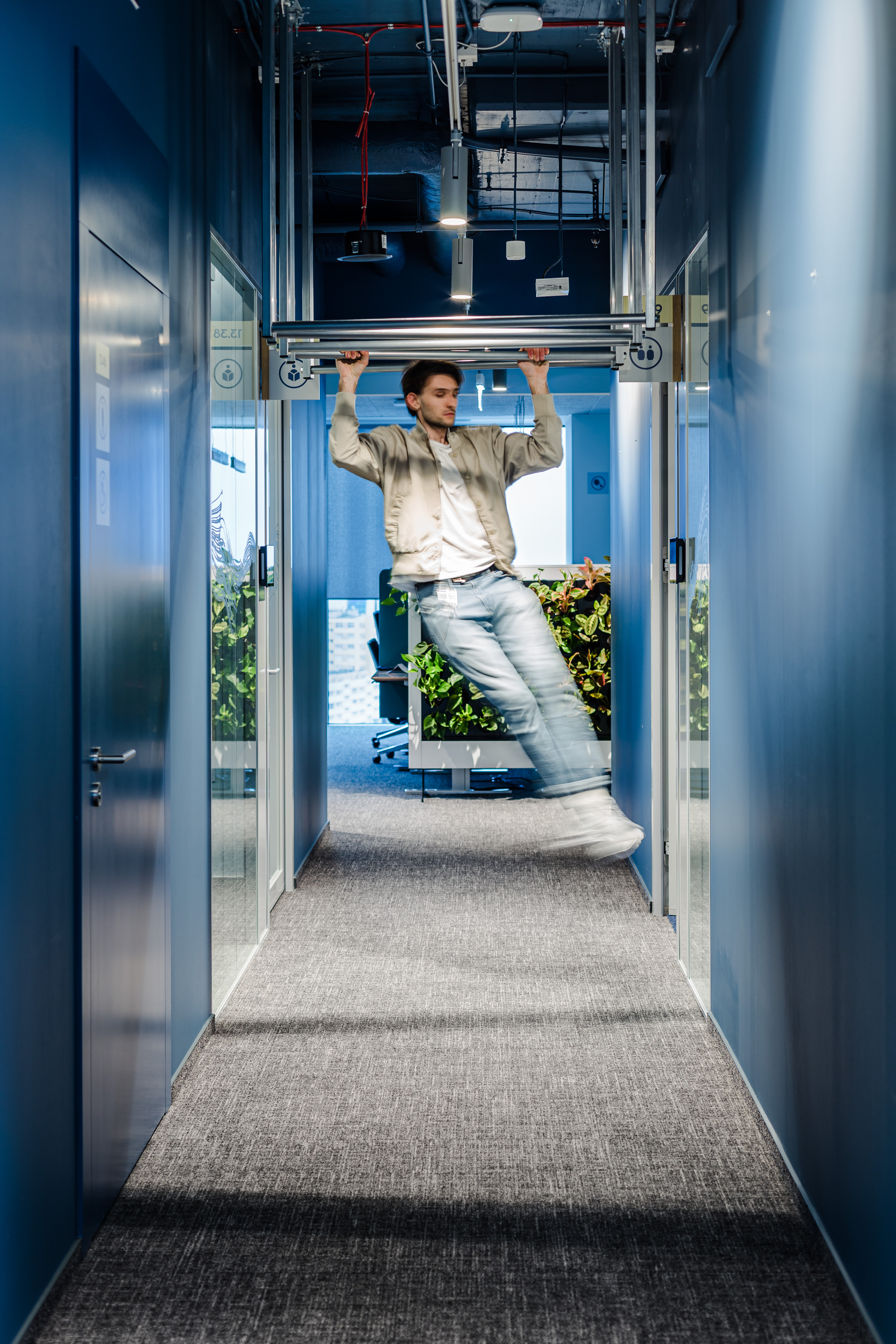
SUSTAINABLE IMPACT
The authors’ starting point was concern for the environment. Inspired by the 3R’s principle – Reduce, Reuse, Recycle – they implemented a circular design process. The key benefits of this approach are not apparent in the space at first glance.
The process began with a detailed inventory of reusable materials – from the previous office and from manufacturers’ warehouses. The architects, client, furniture suppliers and developer then worked on solutions that reduce the negative environmental impact of the project. During the design phase of the spatial layout, it was possible to reduce unnecessary decorative elements and the use of new materials. The result is a less waste office design concept.

What makes an office have a reduced environmental footprint?
All workstations were recovered from the previous office and refurbished. Furniture, glass and ceilings were sized to minimise waste and cuttings during installation. The natural wood floor in the networking area was saved from being milled. Furniture in common areas is from local, Polish manufacturers. The vast majority of flooring, ceilings and soft seating are from sustainable sources – certified, verified on the basis of their carbon footprint.
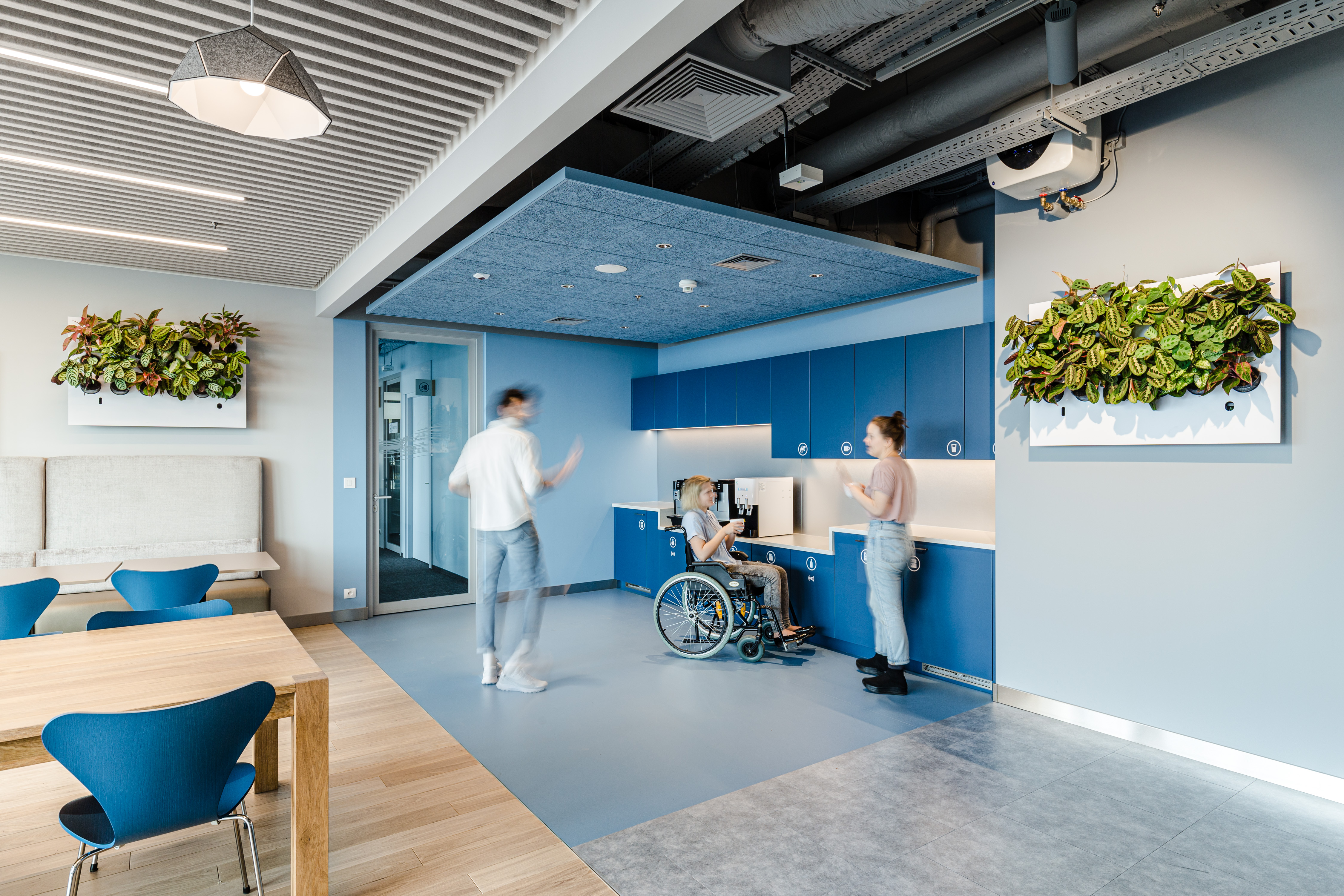
Most of the selected interior design elements are biodegradable or recyclable:
- 100% of the wall coverings are made of natural cork, the acoustic wall panels are upcycled and the hanging acoustic panels are made of eco-friendly felt
- 59% of the table tops are made from compressed PET plastic bottles, 29% from natural wood and 14% from reclaimed furniture board
- ceilings are made of wood wool, chairs are recycled PET and carpets are certified flooring without harmful bitumen content.
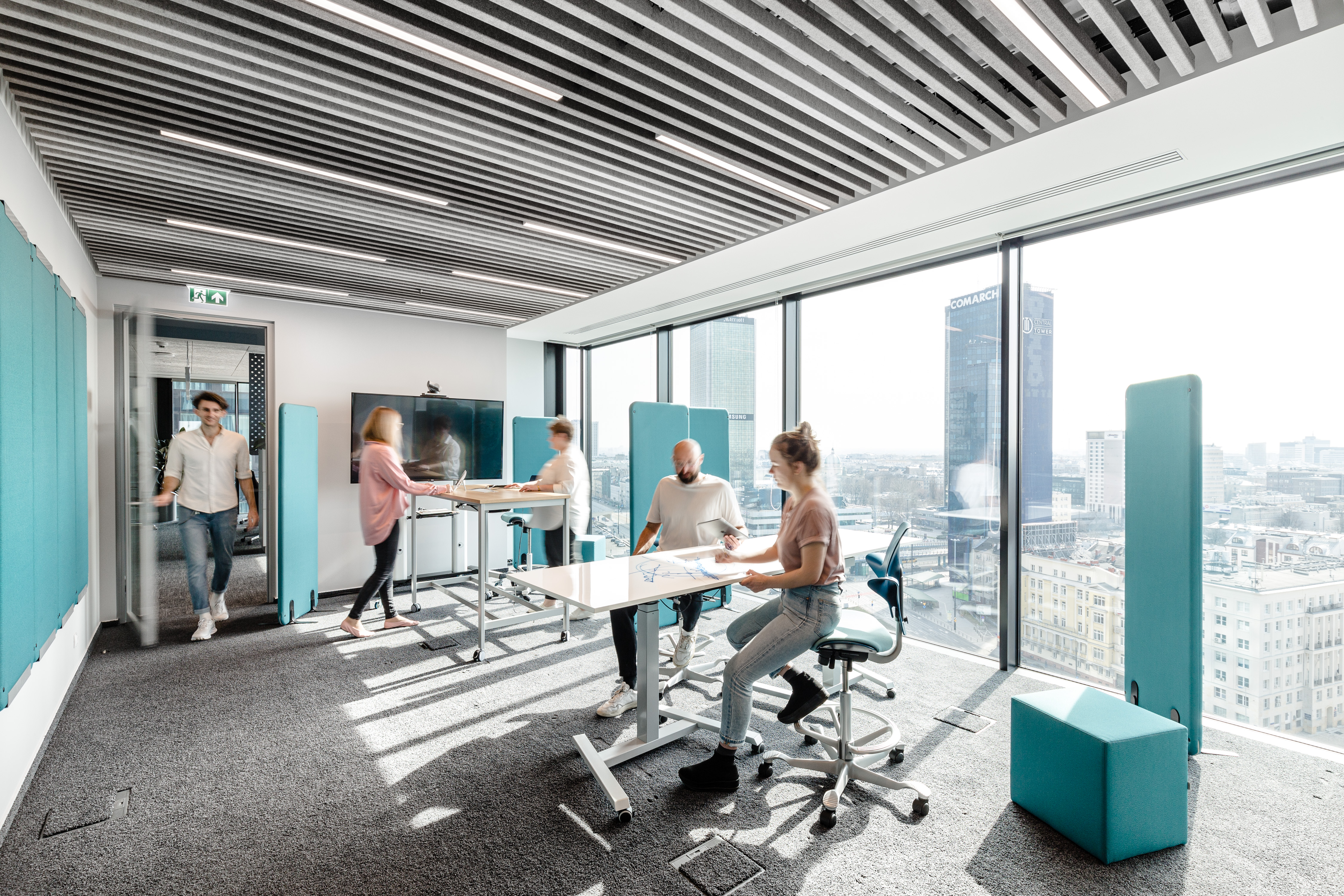
In interiors form follows not only environmental concerns, but above all else, function. Agile workplace zones are designed as a neutral background for various activities and, thanks to the nearby chillout zones, offer the possibility to relax. The space is inclusive and supports people with disabilities – kitchen worktops have been lowered and wide walkways designed.
The space meets the principles of human-centred design and provides for the basic components of employee well-being: physical and mental comfort and contact with nature. Transparent functional layout with appropriately placed glazing of walls maximises the ingress of sunlight in the work and rest zones. Natural vegetation is ubiquitous – 1,752 individual plants were used in the project, which equates to nearly 4 plants per employee.
Ørsted Warsaw Office is a working environment that is effective on many levels – for people, for business and for the planet.
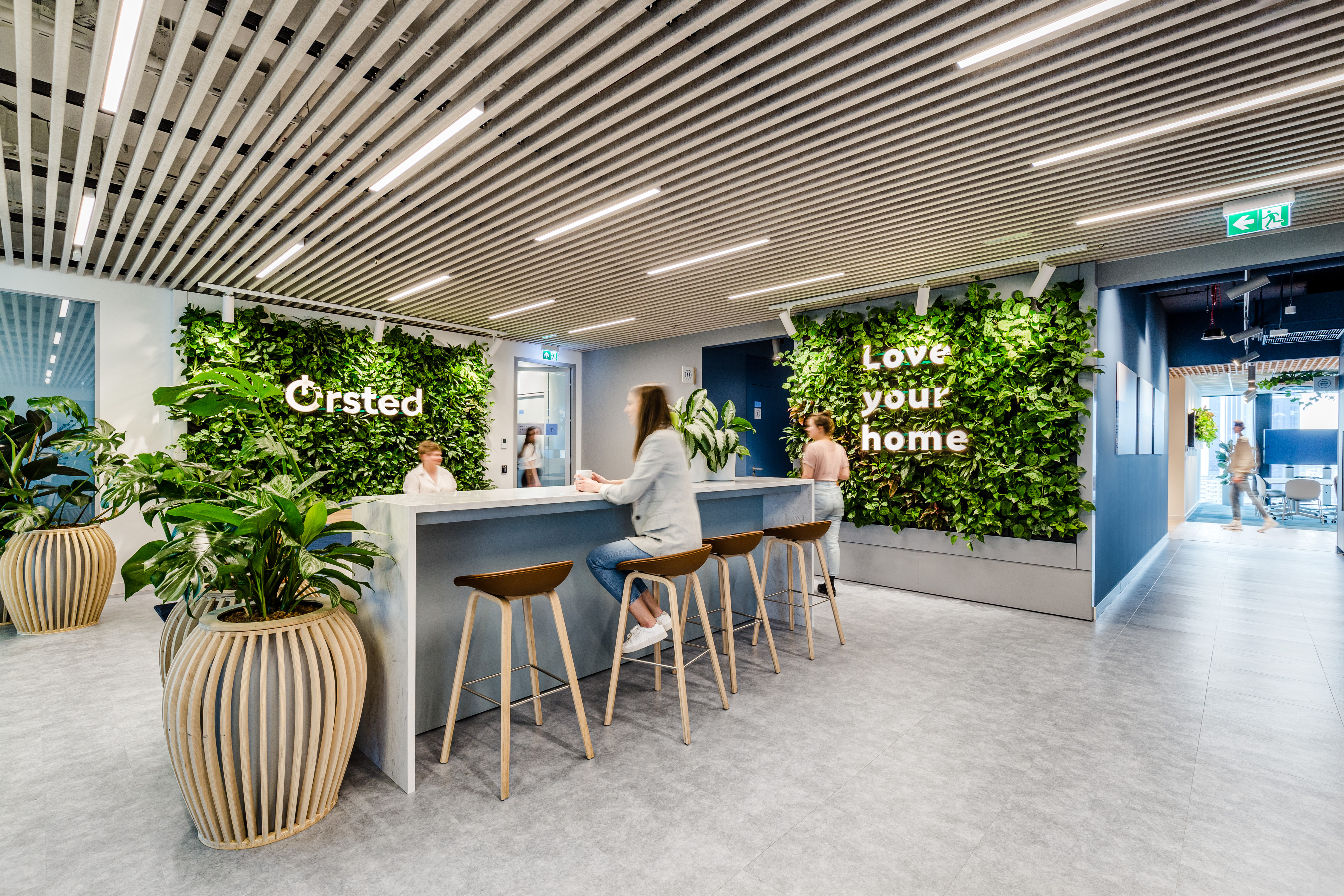
What was the most valuable in the less waste office project from the perspective of the client and employees?
“The design of construction and arrangement in accordance with the principles of a circular economy is a joint success of the entire team. Meeting the basic assumption – reducing the environmental footprint of the project while maintaining the functionality and aesthetics of the office gave us the greatest satisfaction. The positive reactions of employees to the new office are even more motivating. In an internal satisfaction survey, almost 70% of employees rated the overall impression of the office as very good. We have achieved a very high level of ergonomics, common spaces and relaxation areas. The office design based on the values of sustainable development strengthens the sense of belonging of employees to the organization, which for us – a company with a vision of building a world based on renewable energy – is very important. Orsted creates an appropriate climate and conditions for expanding knowledge and shaping good habits related to environmental protection, which can also be successfully implemented in private life. “
Aleksandra Jabłońska, Office Manager, Orsted
What is the influence of the tenant’s awareness on ecological design?
“The project of the Orsted office is our second less waste project. The sustainable vision of the Danish company coincided with our values and motivation to create another such project in Poland. The first one was carried out for a nordic organization which also has an ecological attitude in the foundations of its activities. We have learned that when the Workplace philosophy goes hand in hand with the client’s values, it is much easier to implement positive impact projects. This motivates us to continue, educate and develop competences in the field of circular design. “
Dominika Zielińska, Co-CEO & Head Architect, Workplace
Scope of services:
- needs analysys
- space planning
- design concept
- guidelines for executive project
Orsted metrics:
- Area: 3 650 sqm
- Number of floors: 3
- Employees: 444
- Character of work: agile, differential
- Location: Varso Place, Warszawa
- Duration: august 2019 – january 2021
Project team:
Board of Workplace
- Bogusz Parzyszek, Co-CEO & Founder
- Dominika Zielińska, Co-CEO & Head Architect
Project team
- Aleksandra Czarnecka, Project Lead & Architect
- Małgorzata Romanowicz, Design Lead & Architect
- Ewelina Jezierska, Architect
- Paweł Deroń, Visualisation
- Monika Pietrosian, Researcher
- Damian Bieniek, space branding & wayfinding
Photo
- Adam Grzesik
Story
- Mateusz Sikora
